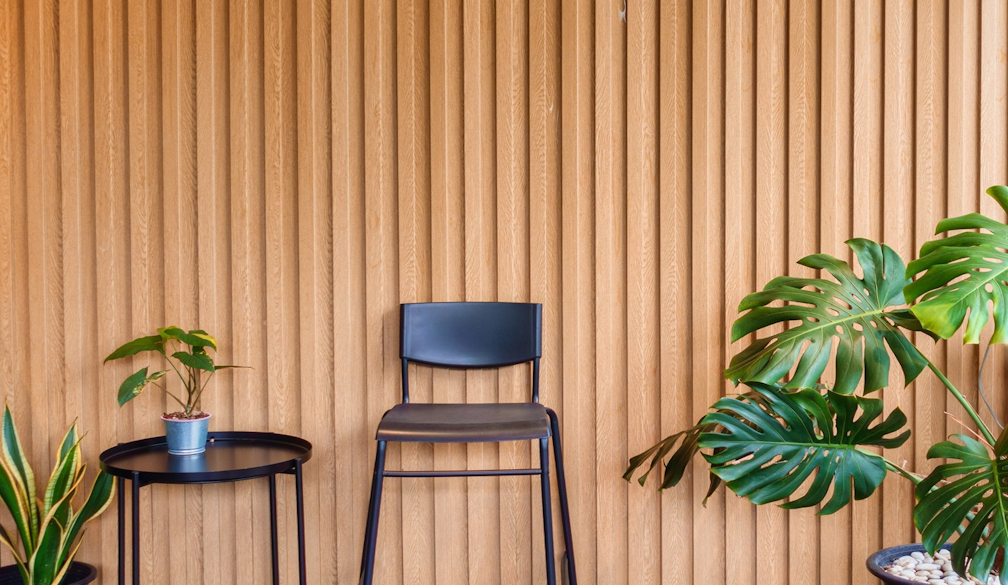Timber Battens vs. Metal Battens: Which One Should You Choose?

When it comes to transforming the interior or exterior spaces of your Australian property, battens have become increasingly popular for their ability to add texture, warmth, and visual interest to walls and ceilings. Whether you're planning to renovate your Perth property or redesign a large-scale architectural project in a laid-back Sydney suburb, choosing between timber battens and steel/aluminium battens can impact both the aesthetic outcome and the long-term performance of your installation.
In this post, we'll discuss the primary differences between the two - from appearance to installation requirements, we'll discuss everything important to help you make the smart choice for your project needs.
Durability Factor
Timber Battens Durability
Today’s timber battens last much longer than many people think - especially when the wood is treated and looked after properly. Premium hardwoods like Victorian ash or thermally modified Nordic pine can serve you for decades. The trick is finishing them well and sticking to a simple maintenance routine.
For busy commercial spaces, pre-finished timber systems come with protective coatings that fend off moisture, UV, and daily wear. Offices, shops, and hotels have all proven that quality wood battens hold up when they’re installed the right way.
That said, timber does need the occasional check-up. In damp rooms or exterior settings, plan on inspecting the battens regularly and recoating them now and then to keep everything in top shape.
Metal Battens Durability
Aluminium or steel battens are built for the long haul with almost no maintenance. They naturally resist water, insects, and rot, making them a smart pick for tough climates or spots that are hard to access.
With a powder-coat or anodised finish, metal battens can look fresh for decades. They won’t warp, crack, or fade, so they’re perfect for outdoor facades or other demanding locations.
Aesthetic Impact and Design Flexibility
Timber Battens Aesthetics
Nothing rivals real timber for warmth and character. Every piece of wood carries its own grain and color, giving each installation a one-of-a-kind vibe. Whether you like pale, modern tones or rich, dark hardwoods, timber offers endless design freedom.
Newer timber systems like click-in panels and drop-in ceiling tiles, work beautifully on both straight and curved surfaces. Over time, wood also develops a mellow patina that many designers and homeowners love.
Metal Battens Aesthetics
Metal battens deliver a clean, modern look that suits minimalist or industrial styles. They come in a huge range of powder-coat colors, plus realistic wood-look finishes for projects that want the best of both worlds.
Because metal is manufactured to tight tolerances, you get razor-sharp lines and perfectly even spacing, which is ideal for large, precise installations.
Cost Considerations: Initial Investment vs. Long-term Value
Timber Battens Costs
Timber prices swing based on species, grade, and finish. Premium hardwoods cost more upfront, but their durability and timeless appeal often justify the spending.
Pre-finished timber systems coming from top-rated commercial timber suppliers may add to the initial bill but can slash labour time because the pieces arrive cut, coated, and ready to go. Remember to budget for periodic upkeep, though you can replace single boards if they get damaged without tearing down the whole wall.
Metal Battens Costs
Metal battens usually start higher per metre than entry-level wood, yet they offer solid long-term value. Thanks to their precision manufacturing, installation is quick, reducing labour costs.
Over a building’s lifespan, the near-zero maintenance of metal can make it the cheaper option, especially in harsh environments where timber needs frequent touch-ups.
Installation Complexity and Considerations
Timber Battens Installation
Modern timber systems have made life easier for installers. Click-in designs snap together fast and don’t demand specialist tools. Prefab panels and drop-in ceiling tiles can overhaul a space with minimal downtime.
Key points: allow air to circulate behind the battens and leave room for natural expansion and contraction. Most engineered systems already account for this movement, so issues are rare.
Metal Battens Installation
Metal battens are straightforward, and mostly they clip or screw into place quickly. Because metal doesn’t swell or shrink like wood, alignment stays spot-on. Just keep thermal expansion in mind for big exterior runs.
Metal solutions also play nicely with building services, hiding cables or integrating lighting for a seamless finish.
Making Your Choice: Timber Battens vs. Metal Battens
Choose Timber Battens When:
- You want a warm, natural feel
- The design leans traditional or transitional
- You’re fine with occasional maintenance
- You need sound dampening (wood softens acoustics)
- Sustainability and natural materials are priorities
Choose Metal Battens When:
- Maintenance access is tough or limited
- The space faces harsh weather or high humidity
- Perfectly straight, geometric lines are essential
- Long-term durability trumps initial cost
- You’re after a contemporary or industrial look
As is evident, both timber and metal battens can be show-stoppers when chosen wisely and installed correctly. Talk with experienced commercial timber suppliers, get samples, and weigh up the technical details so your battens meet every aesthetic, performance and budget goal for years to come.
Also Read: Understanding Commercial Timber: Types, Grades, and Uses








